 |
Boston was founded in 1630 by English Puritans. The area was originally called Trimountaine, but later renamed Boston after a town in England. In 1635, the first public school in America was founded (Boston Latin School) in Boston, followed by the first university (Harvard) in 1636.
In the 1770’s, Boston was the hotbed of revolutionary action in America. After the Boston Massacre and Boston Tea Party, the first battles of the American Revolution were fought in nearby towns, and the Battle of Bunker Hill was fought in present-day downtown. After the war, Boston remained one of the nation’s most important ports, which exported great quantities of rum, fish, salt and tobacco. In the mid 1800’s, Boston became a major center for the abolitionist movement (anti-slavery), and soon became one of the nation’s leading manufacturing centers.
Today, Boston is the capital of Massachusetts and cultural and economic center of New England. It is affectionately called "Beantown," for its history of producing baked beans with imported molasses. It is a popular tourist destination for its history, architecture, and cuisine. Boston is also a major college town and is home to many prestigious schools besides Harvard such as Tufts University, Massachusetts Institute of Technology (M.I.T.), Wellsley College, Boston College, and Boston University.
Back to Map
|
| |
|
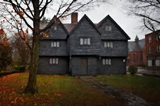 |
Salem
In 1692, several girls in the strictly Puritan village of Salem, Massachusetts experienced "fits of obscene babbling and
hysteria" and admitted hearing evil voices when their preacher spoke. They claimed to be bewitched and accused three outcast women of being witches. Soon, dozens of people were thrown in jail and charged with practicing witchcraft. The condemned "witches" were tried at court, many of whom were convicted. In all, 19 people were hung from the gallows for witchcraft in what came to be known as "The Salem Witch Trials".
Back to Map |
| |
|
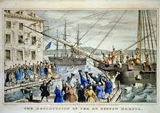 |
Boston Tea Party
In the 1770's, Boston was the hotbed of Revolutionary action in the colonies. In 1773, the sons of Liberty, a group of Patriots dressed up as Mohawk Indians, boarded three British ships that were loaded with tea. The group seized the ships and threw 342 barrels of the tea into Boston Harbor in protest of the 1773 tea tax, and other taxes that had been levied against the colonists.
The Boston Tea Party was a major event leading to the American Revolution. As a result, the British Crown issued the Intolerable Acts, a series of rules designed to exert complete control over the colonies.
Back to Map |
| |
|
 |
Fenway Park
Home of the Boston Red Sox baseball team, Fenway
Park is the oldest baseball venue in the United States, and one of the quirkiest ballparks in baseball. It features a 37-foot tall left field wall, known affectionately as "The Green
Monster". Fenway Park currently seats 36,200 people.
Back to Map |
| |
|
 |
Plymouth
Plymouth Rock commemorates the spot where English Puritan settlers aboard the Mayflower first set foot in New England in 1620.
The Puritans, who had broken away from the Anglican church, soon built a settlement named Plymouth, after a city in England. The colony at Plymouth most certainly would have dissolved if it were not for local Native Americans, including Squanto, who taught them how to grow their own
crops and survive in the frigid Massachusetts winters. It was in Plymouth that some claim the first Thanksgiving took place in 1621.
Back to Map |
| |
|
 |
Harvard University
Today, Harvard University is considered (arguably) the most prestigious university in America and is one of nine Ivy league Universities.
Harvard is the alma mater of hundreds of renowned individuals, including seven U.S. presidents. The school boasts the world's third largest library and has the largest endowment (amount of money) of any university in the world. As of 2016, it had an endowment of 37.5 billion dollars.
Back to Map |
| |
|
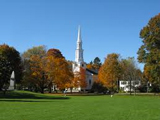 |
Lexington
In the late 1760's and early 1770's, Massachusetts was
stirring with the idea of revolution. On April 19, 1775, the
first shots of the American Revolution were fired at Lexington. British soldiers, ordered to confiscate stolen
arms, fired upon a mob of Patriots, killing eight. The British then marched to nearby Concord. The citizens of Con-
cord, however, had been warned of the impending British appraoch and were prepared for battle.
Back to Map |
| |
|
 |
Concord
British soldiers marched from Lexington to Concord in the
hopes of a destroying Patriot arsenal.The Patriots, however, were warned ahead of time about the British approach and ambushed the soldiers on their way back to Boston. 73 British soldiers were killed. The Patriots had taken their first steps toward independence from England.
Back to Map |
| |
|
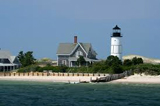 |
Cape Cod
Cape Cod is an arm-shaped peninsula that juts out into the
Atlantic Ocean. It was a landmark for early explorers and
navigators, and was one of the first places settled in the New
World. In 1961, a large portion of its shoreline was designated as Cape Cod National Seashore.
Today, Cape Cod is a very popular tourist destination.
"The Cape," as it is often called, is famous for its beautiful summer climate, sea-food, shopping, and many bed & breakfasts.
Back to Map |
| |
|
 |
Connecticut River
| Length: |
407 miles |
| Source: |
Third Connecticut Lake, NH |
| Outflow: |
Long Island Sound |
| |
|
| The Connecticut River is the longest river in New England. |
Back to Map |
| |
|
 |
Worcester
Worcester, pronunced "Wooster," is the second largest city in Massachusetts and the third largest city in New England.
It was founded in 1673 and incorporated as a village in 1684. The settlement was named after a town in England.
In 1953, Worcester was struck by a terrible tornado that killed 94 people. It was the deadliest tornado in New England history.
Back to Map |
| |
|
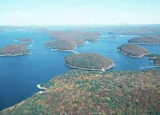 |
Quabbin Reservoir
| Length: |
18 miles |
| Capacity: |
412 billion gallons |
Quabbin Reservoir is the largest body of water in Massachusetts. Built between 1930 and 1940, the artifical lake now serves as the primary water supply for the city of Boston.
Back to Map |
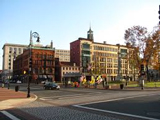 |
Springfield
Springfield has played prominently in American history. Much of the town was destroyed in 1675 during King Phillip's War. The leader of the Wampanoag tribe, Metacom (known as Phillip by the settlers), avenged his brother's death at the hands of the settlers by attacking the town.
In 1770, George Washington selected Springfield
as the site for the National Armory. The armory was later attacked by a group of poor farmers in 1786 and 1787 led by Daniel Shays. The farmers were angry about taxes levied by the U.S. government. The rebellion was eventually quelled, but the government's lack of control over the incident led to the 1787 Constitutional Convention.
Today, Springfield is the largest "Springfield" in the nation and the third largest city in Massachusetts. It is best known as the birthplace of the sport of basketball and is home to the Professional Basketball Hall-of-Fame. It is also home to Smith & Wesson, the largest manufacturer of firearms in the nation, which opened in Springfield in 1852.
Back to Map |
| |
|
 |
Nantucket Island
Nantucket Island, located off of the southern shores of
Cape Cod features beautiful beaches and private estates.
It was formerly the world's leading whaling port, and is
home to the nation's largest concentration of pre-Civil
War era buildings. The entire island is protected as a Nat-
ional Historic Landmark.
Back to Map
|
| |
|
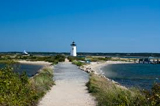 |
Martha's Vineyard
Martha's Vineyard, often referred to simply as "The Vineyard," is an island located off of the southern coast of Cape Cod. It has a year-round population of 15,000. The island was named for the mother-in-law and daughter of English explorer Bartholomew Gosnold (both named Martha), who sailed there in 1602.
Historically, the island was a major whaling center. In the 1800's, it was home to an unusual number of deaf people, who developed their own form of sign language known as "Martha's Vineyard Sign Language".
Today, the island is a very popular summer resort. During the summer months, its population swells to over 100,000.
Back to Map |
| |
|
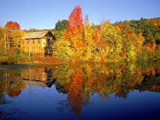 |
Appalachian Mountains
The Appalachians extend nearly 1,500 miles from Canada to Georgia. They are known as The Berkshires in Massachusetts.
Highest Point:
|
Mt. Mitchell (NC) 6,684 ft |
| Highest Point in Massachusetts: |
Mt. Greylock: 3,491 ft |
| |
|
Back to Map |
|